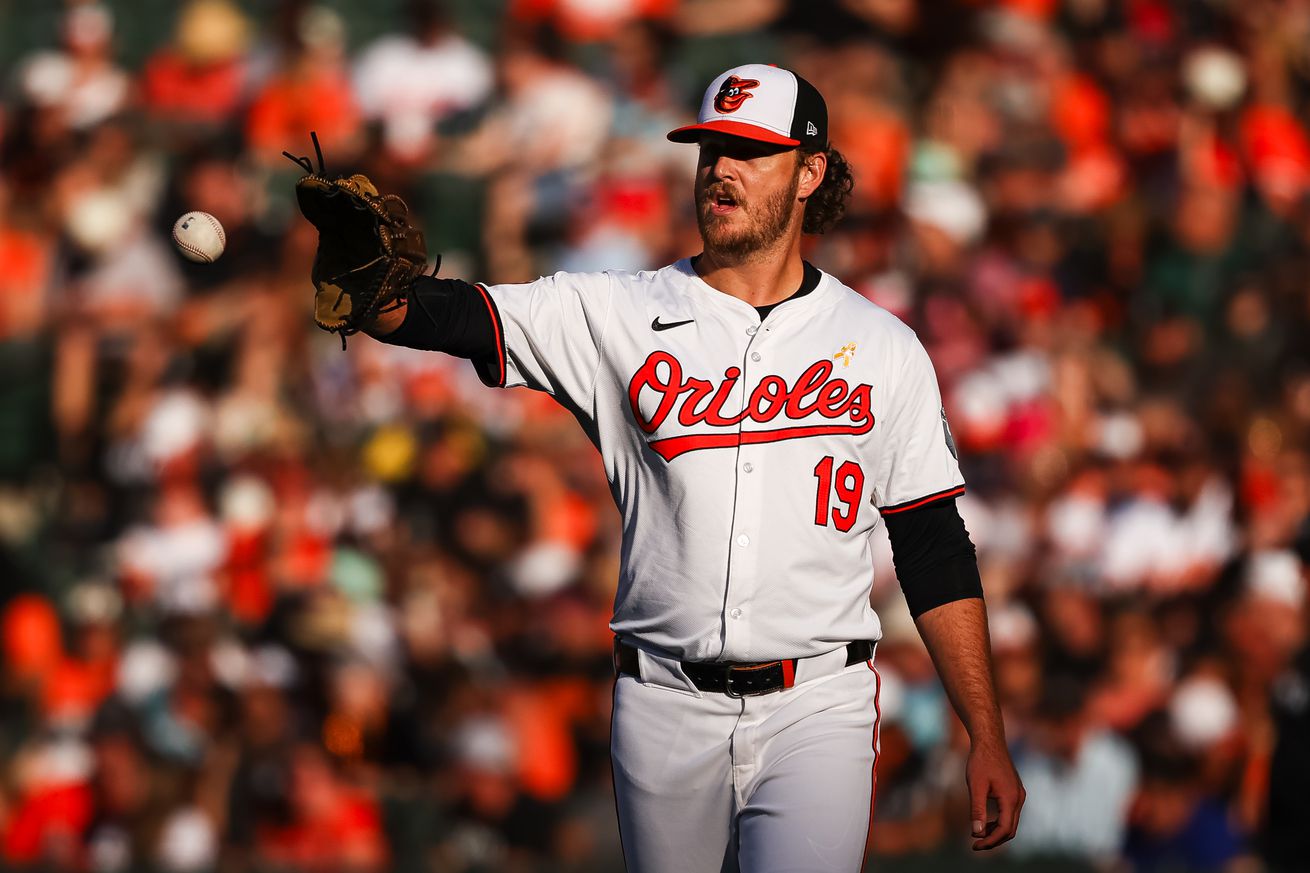
Which is to say, it didn’t go great.
I wish it’d gone better. I mean, the Orioles’ whole 2024 season, but for the purposes of this player review I’m referring to the Cole Irvin experiment in Baltimore, which has already come to an end. By all accounts, Irvin is a great teammate with a great sense of humor. He’s an animal lover, one of the authors of the Original Homer Hose (now the Hydration Station), he does good interviews, and he’s been a great clubhouse guy. He just hasn’t pitched that well.
Cole Irvin came over to Baltimore in January ’23, when Mike Elias picked him up in a trade with the Oakland Athletics to provide innings-eating capability. Irvin’s first season was a mixed bag. In his first month as an Oriole, he gave up fifteen runs in three starts and got sent to Triple-A. The reset helped, and he pitched to a 3.40 ERA as a swingman over the second half of the season.
This season, Irvin figured to be one of the people who’d be bumped, perhaps to the bullpen, perhaps to Triple-A as depth, if/when a rotation of Corbin Burnes, Kyle Bradish, Grayson Rodriguez, John Means and Dean Kremer came together. Narrator: It didn’t come together. Instead, multiple injuries helped Irvin make the team out of spring training as a starter.
There was a lot of talk back in the spring that we were seeing a massive increase in velo out of Cole Irvin. I guess it’s true, because the article linked states that Irvin’s fastball hit 95.9 during a spring training start in February. Unfortunately, it was a mirage, and over the course of the year his fastball velo remained around 92 mph, essentially the same as it was last year.
In the first half, the O’s used him primarily as a starter and in the second, primarily as a middle-innings, relief kind of guy. He shone in neither role. Irvin posted a 4.67 ERA in the first half and a rough 6.85 mark in eleven games in the second.
What happened to push Cole Irvin from competent in the last half of ’23, to unusable after June ’24? A familiar story, I guess: hits and walks allowed went up, strikeouts went down.
He began this season red-hot, including a miraculous 3-1 record with a 2.01 ERA in May as a starter. That month, he allowed 18 hits in 22 innings and kept his walks down, good for a WHIP of 0.985. He also struck out 7.3 batters a game. That output would have kept him in the rotation all year.
But in June, way different story: he went 1-3 with a 6.30 ERA and allowed significantly more hits than innings pitched: 45 in 30.0 IP. His WHIP leapt to 1.700, and his strikeout rate dropped to 6.0.
Understandably, the Orioles moved him to the bullpen after that. You imagine they might have liked to option him to Norfolk mid-season, the way they did in ’23, but pitcher injuries made that course of action impossible.
The move back to relief didn’t reset him, though: Irvin posted an ERA of 9.00 in five appearances in July, got DFA’d and then called up again, and although he made two competent starts in August, allowing two runs in 4 1/3 innings to the Mets and the Dodgers, respectively, in place of an injured Zach Eflin (who had shoulder soreness), the honeymoon was over.
Irvin pitched two more times for the Orioles in relief, neither outing in a close game, before being designated for assignment on September 15. The Twins claimed him, saw him pitch four times, then DFA’d him, too. He’s now a free agent.
Like I said, I wish it’d gone better. In fairness to the Orioles, cutting him was a rational decision given that his peripheral stats all took a dive from last year to now. In BaseballSavant terms, his stuff went from red with some blue in 2023 (a mix) to all blue in 2024 (bad). He suffered a decline in chase rate and walks, and an increase in hard hits and exit velocity. He became, obviously, very hittable.
Then again, it’s not like Cole Irvin was an ace before the Orioles acquired him in the winter of 2023. In two seasons as a starter with Oakland, he’d gone 19-28 with a 4.11 ERA and a 1.244 WHIP. In terms of prospects, Irvin cost the Orioles infielder Darell Hernáiz, who’s been injured this year but still hasn’t done anything to make you miss him too much.
For me, the question is: was obtaining a middle-of-the-road left-handed starter the right decision in winter ’23? Probably yes. You could say, in hindsight, that the Orioles rebuild was still early enough that a guy like Irvin, or a steady veteran like Kyle Gibson, was the right sort to be targeting. As for keeping Irvin on the roster through the spring, when it became clear that the Orioles were going to need starters: also reasonable.
In short, despite his mediocrity, I don’t blame the Orioles front office for how long Irvin pitched for this team. This is not the same thing as giving up Kyle Stowers and Connor Norby for Miami’s Trevor Rogers (ahem) in the middle of a playoff push—but we’ll get to that another day.
It is fair to guess that this concludes the Cole Irvin experiment in Baltimore. How to sum it up? A nice guy with not-so-great stuff? An innings-eater who pitched slightly worse for Baltimore (7-9, 4.68 ERA, 1.354 WHIP) than his career numbers had suggested to that point? A telling indictment of Mike Elias’s approach of trying to acquire great pitching on the cheap? At least we’ll always have the Homer Hose.
Previous 2024 player reviews: Keegan Akin, Cionel Pérez
Tomorrow: Ryan O’Hearn